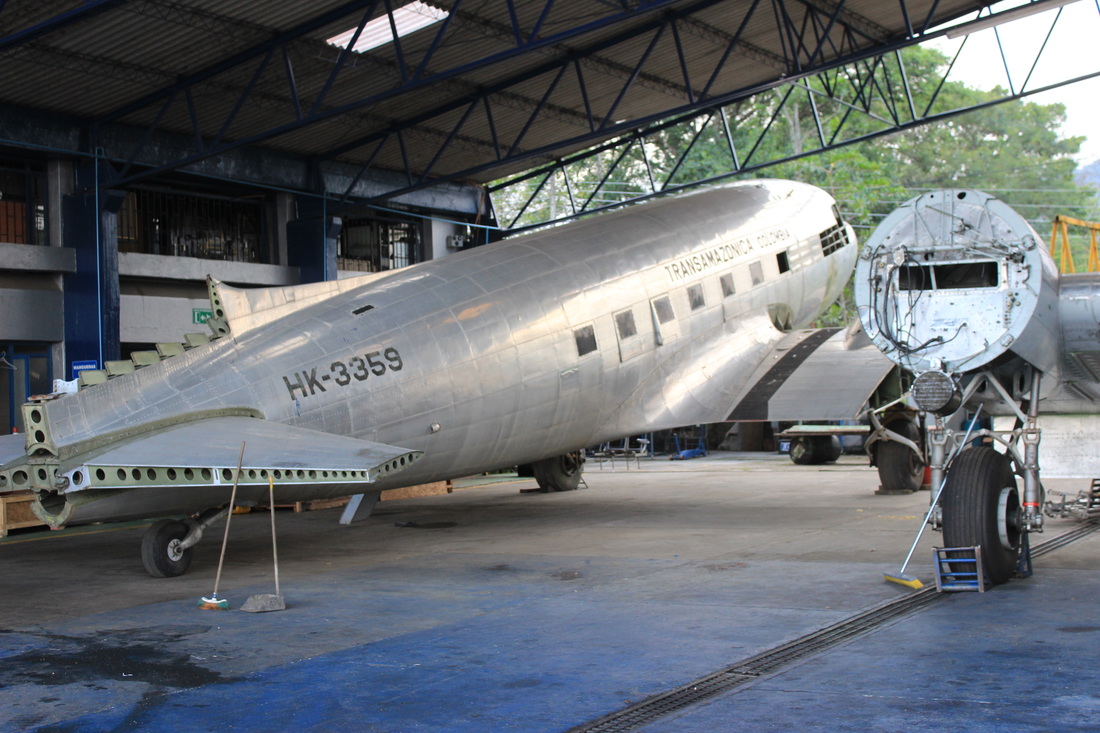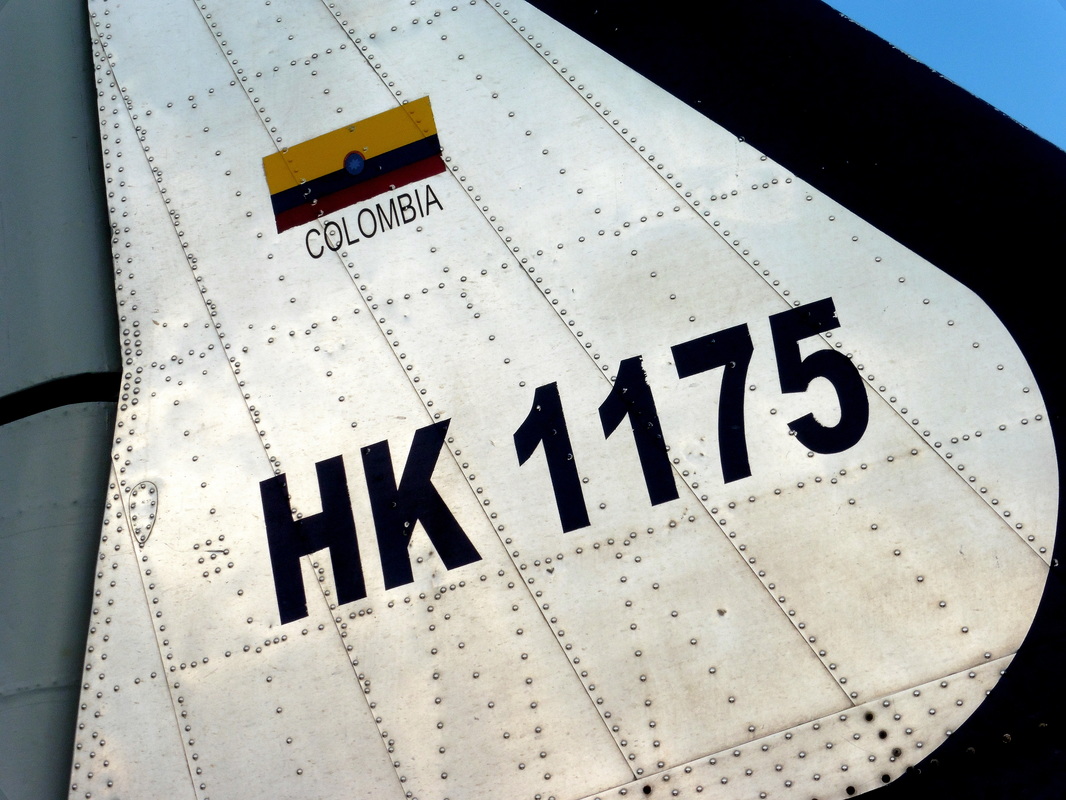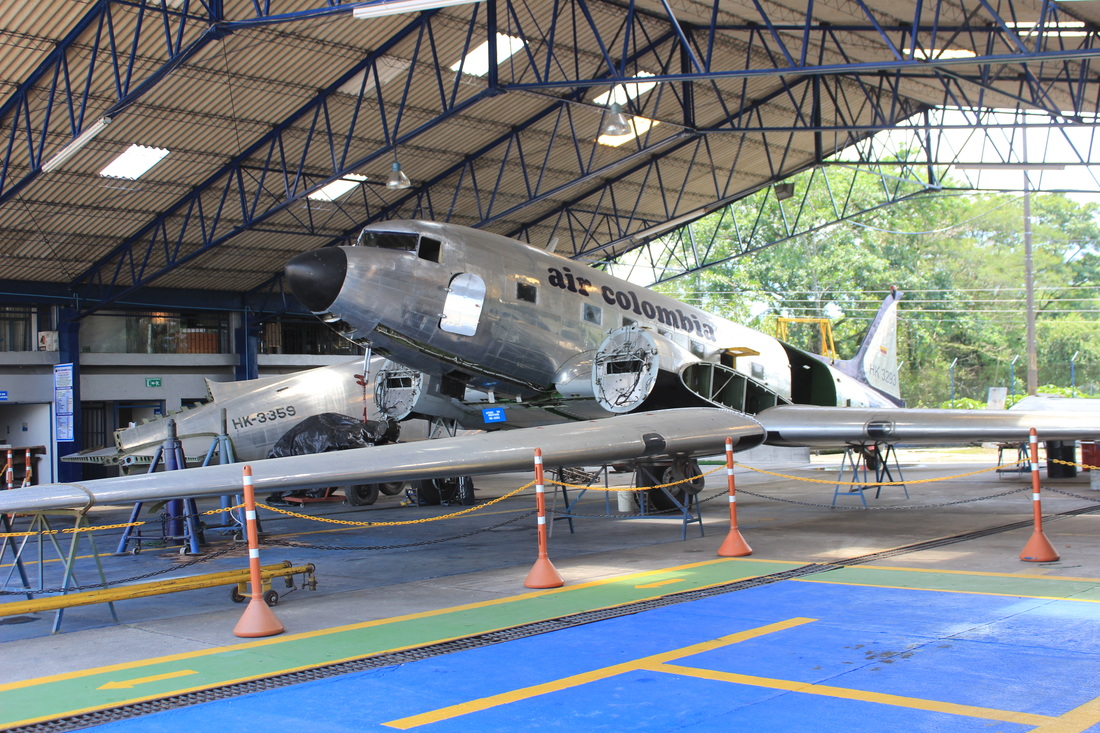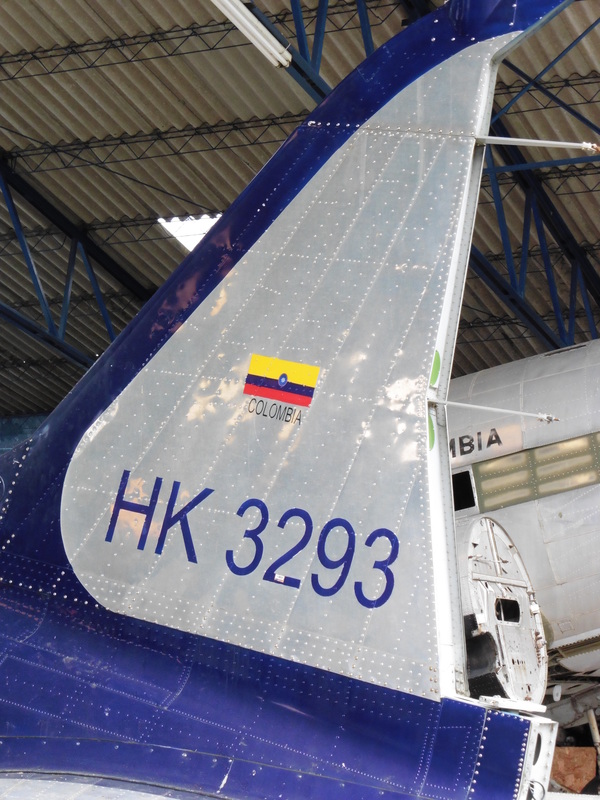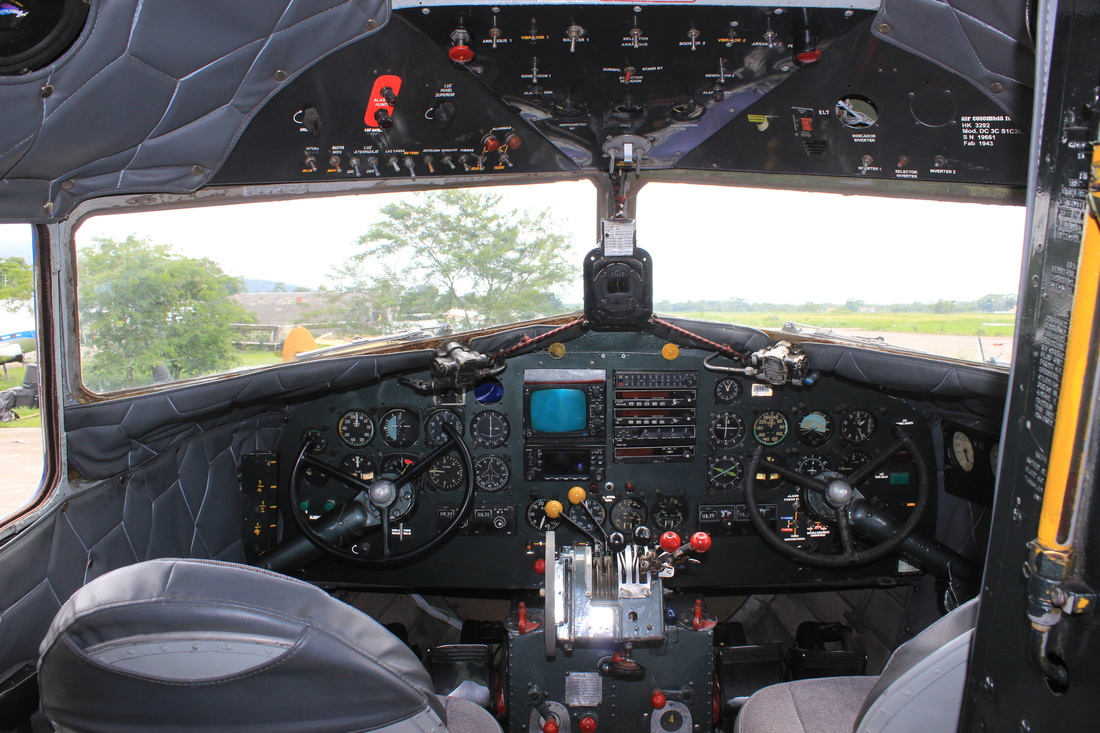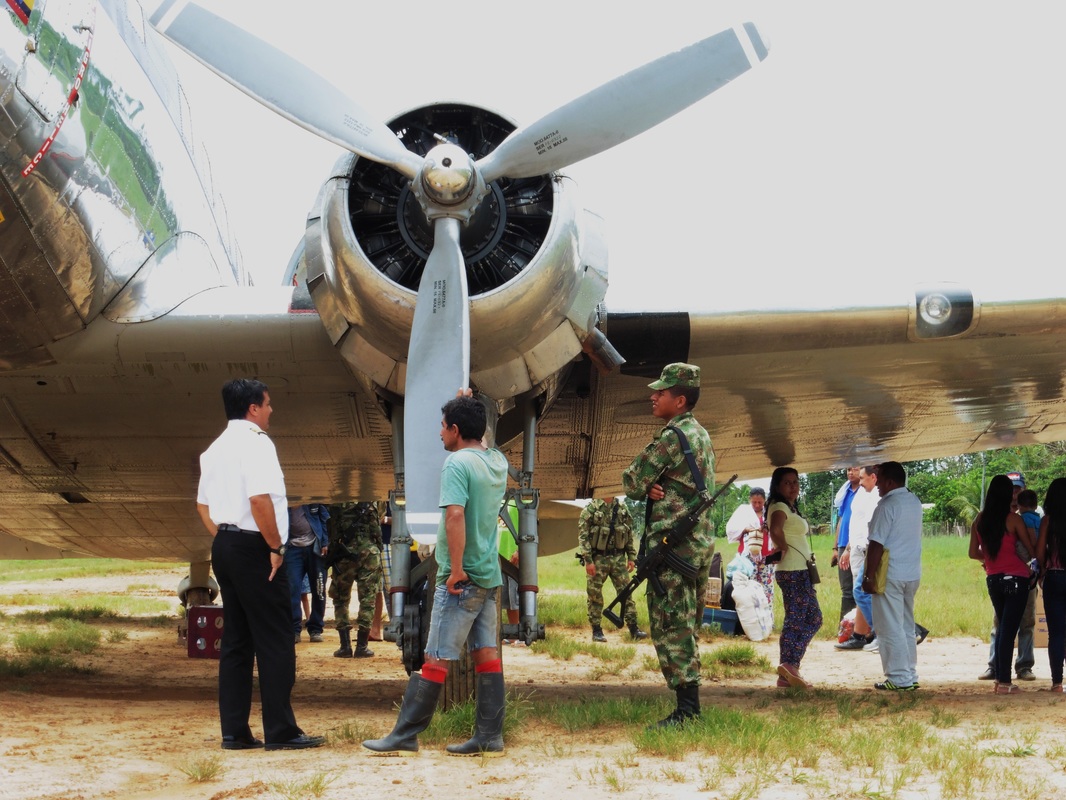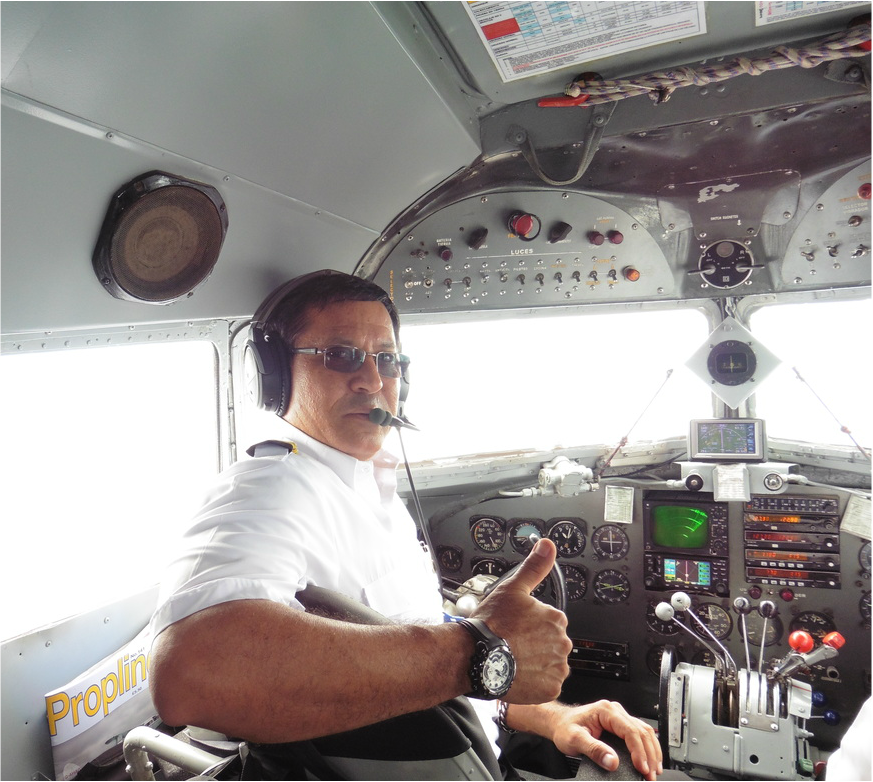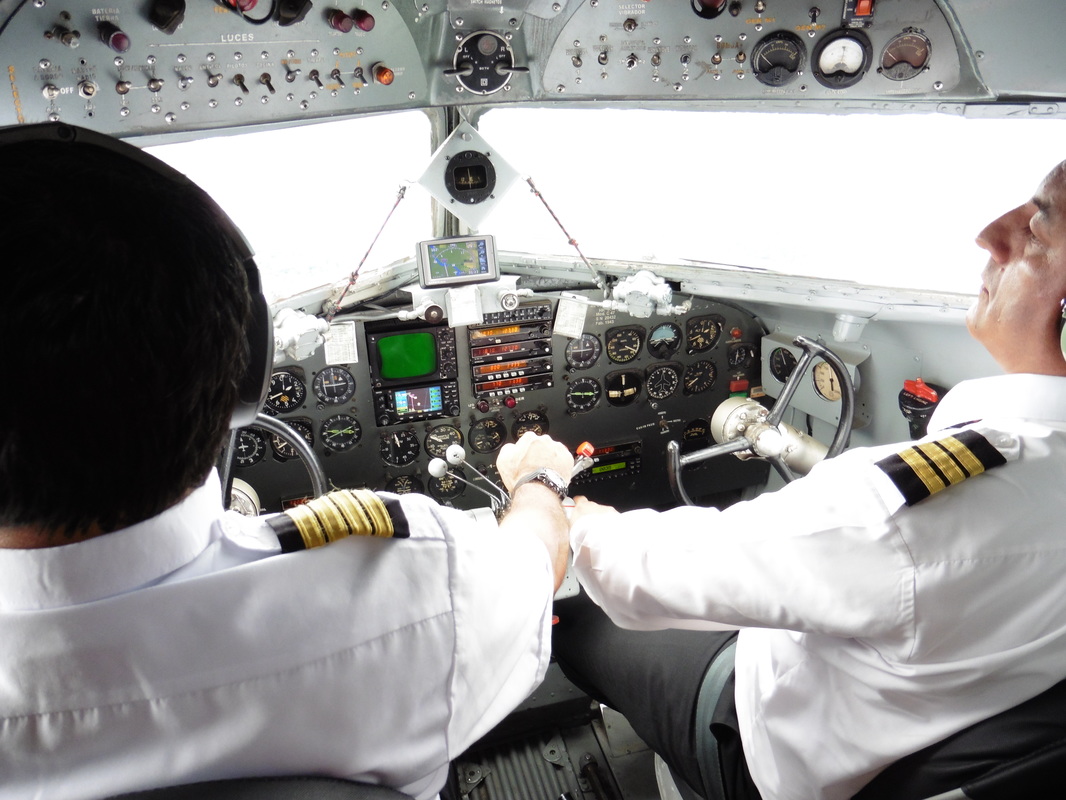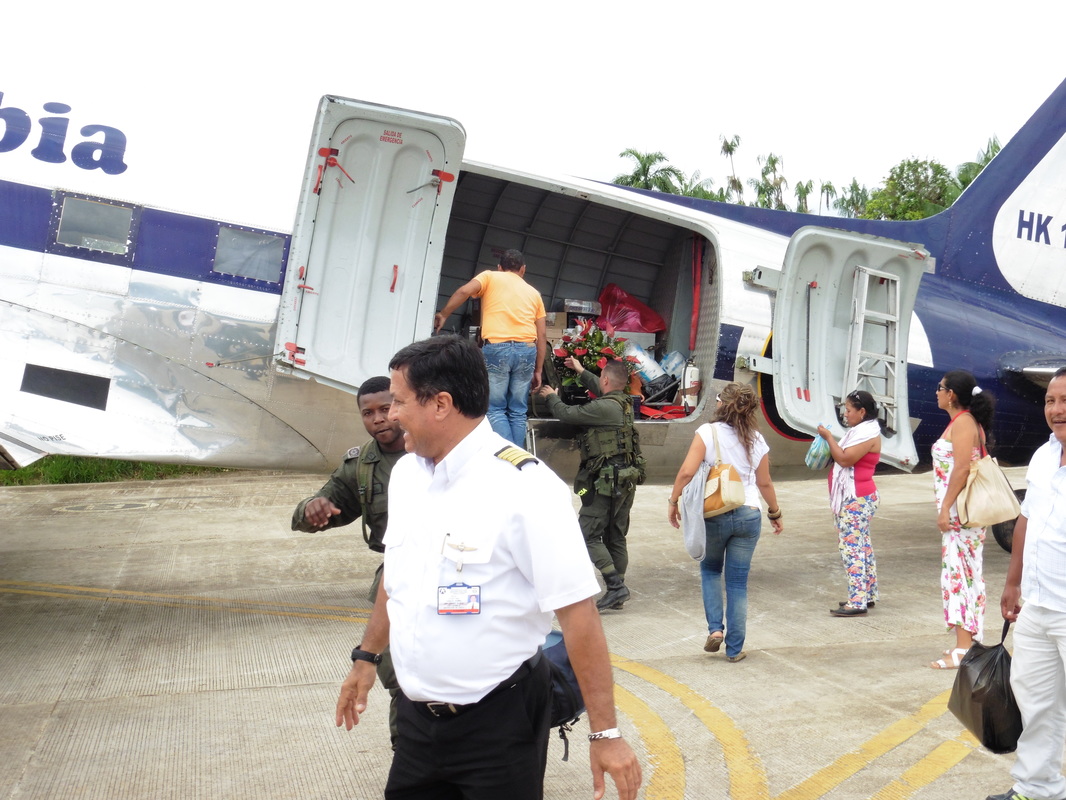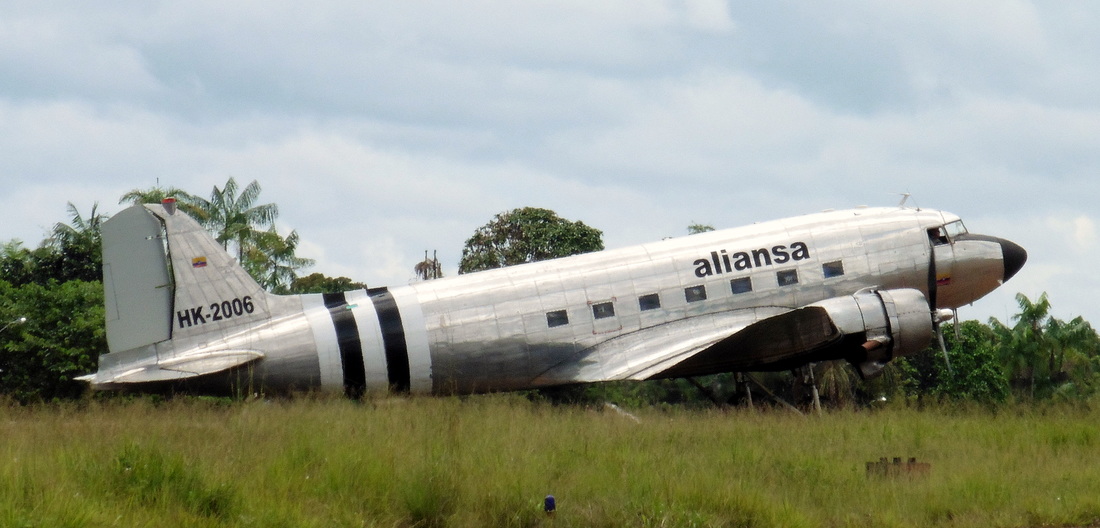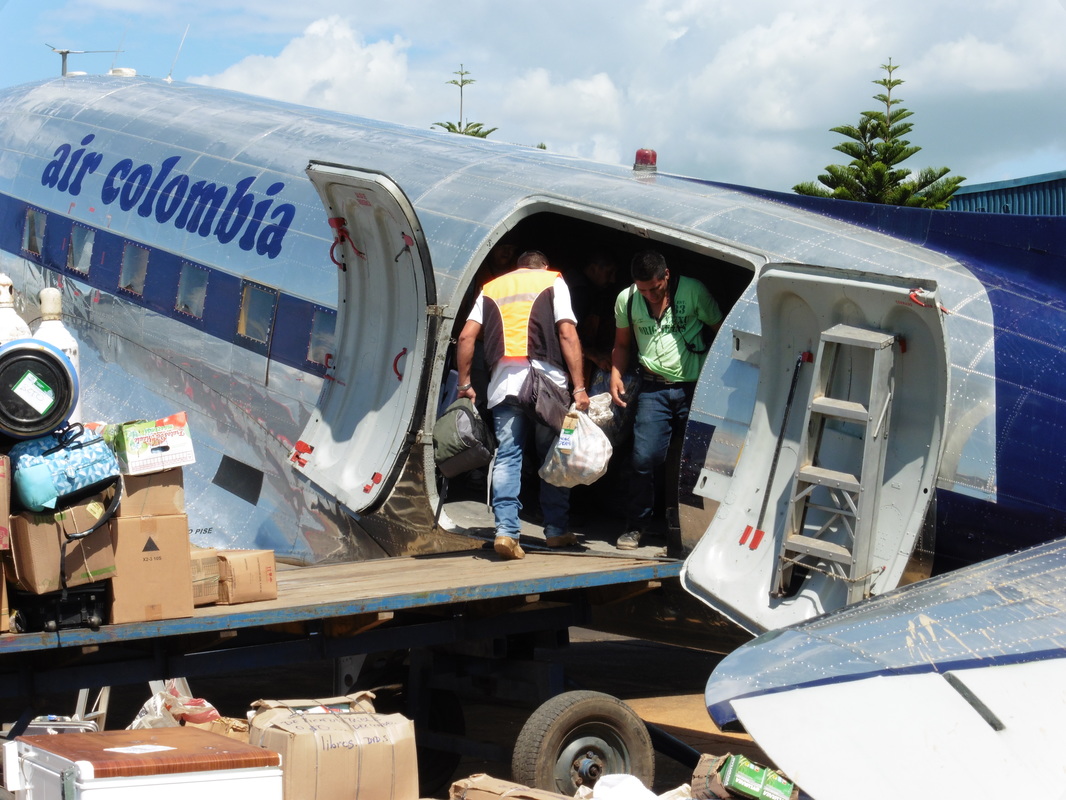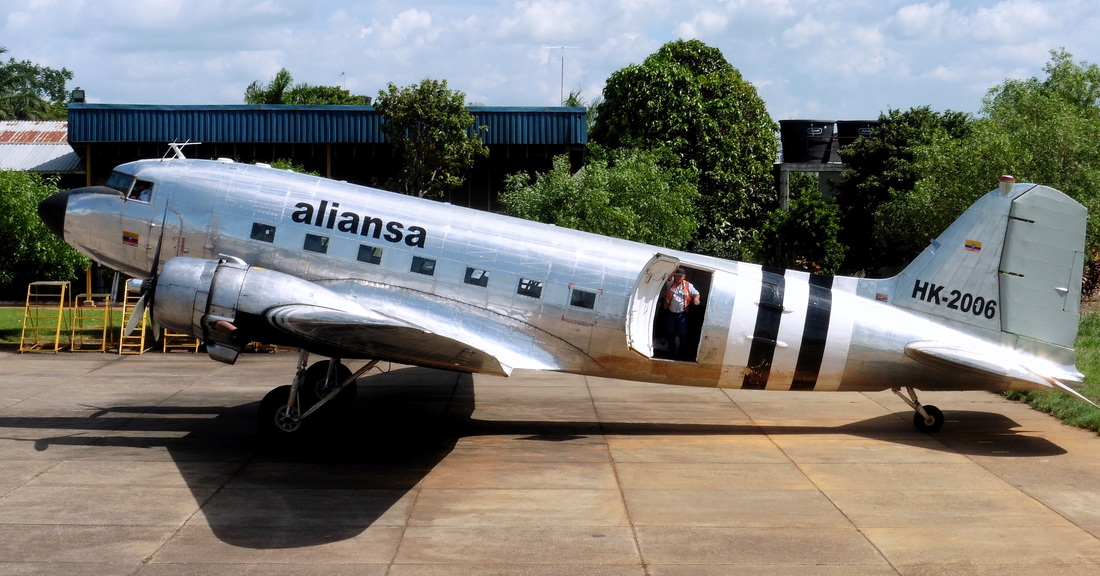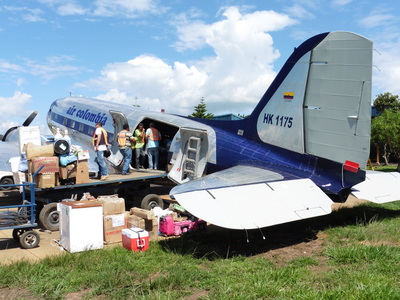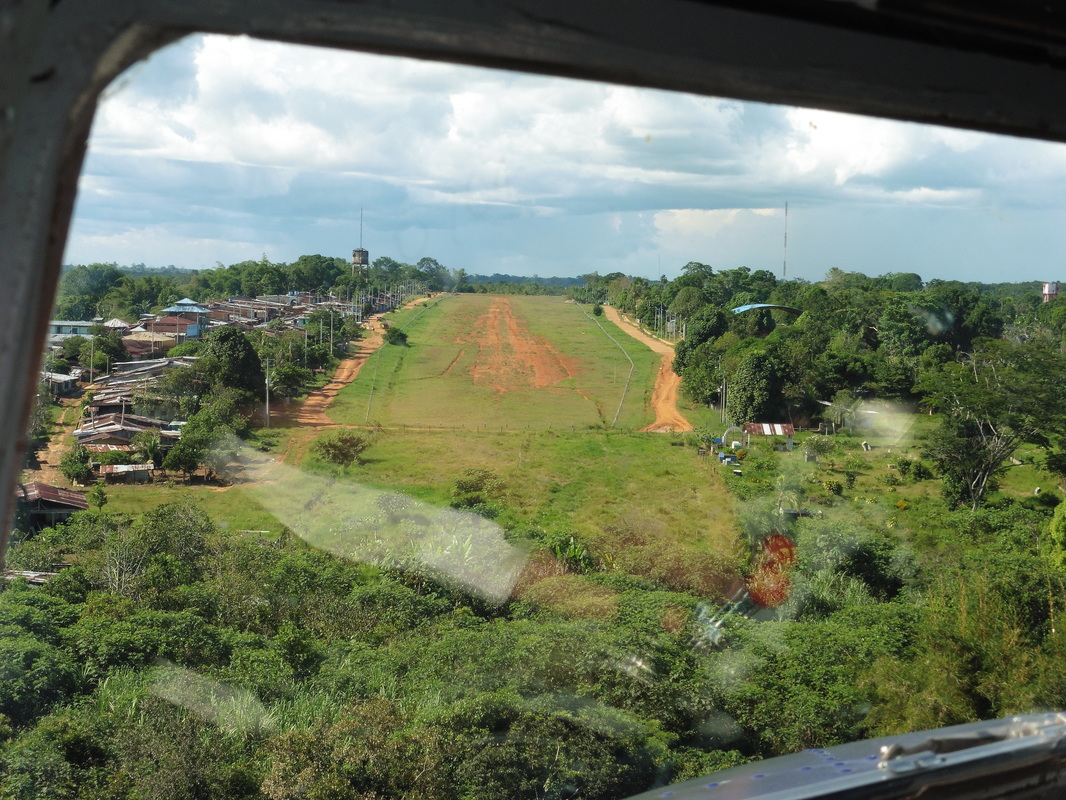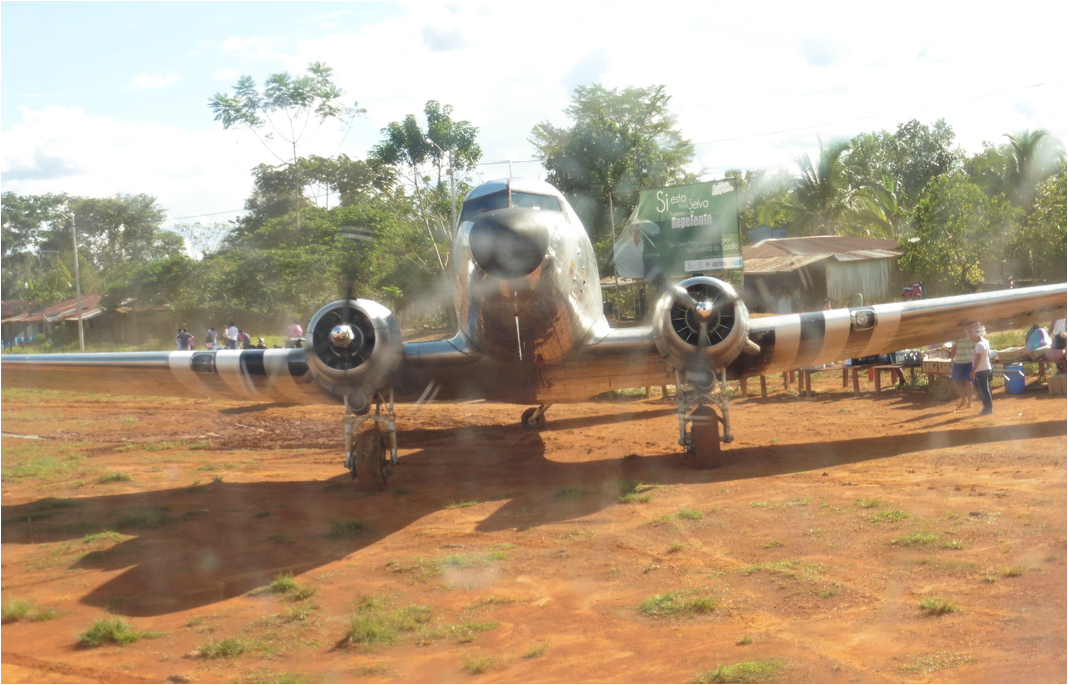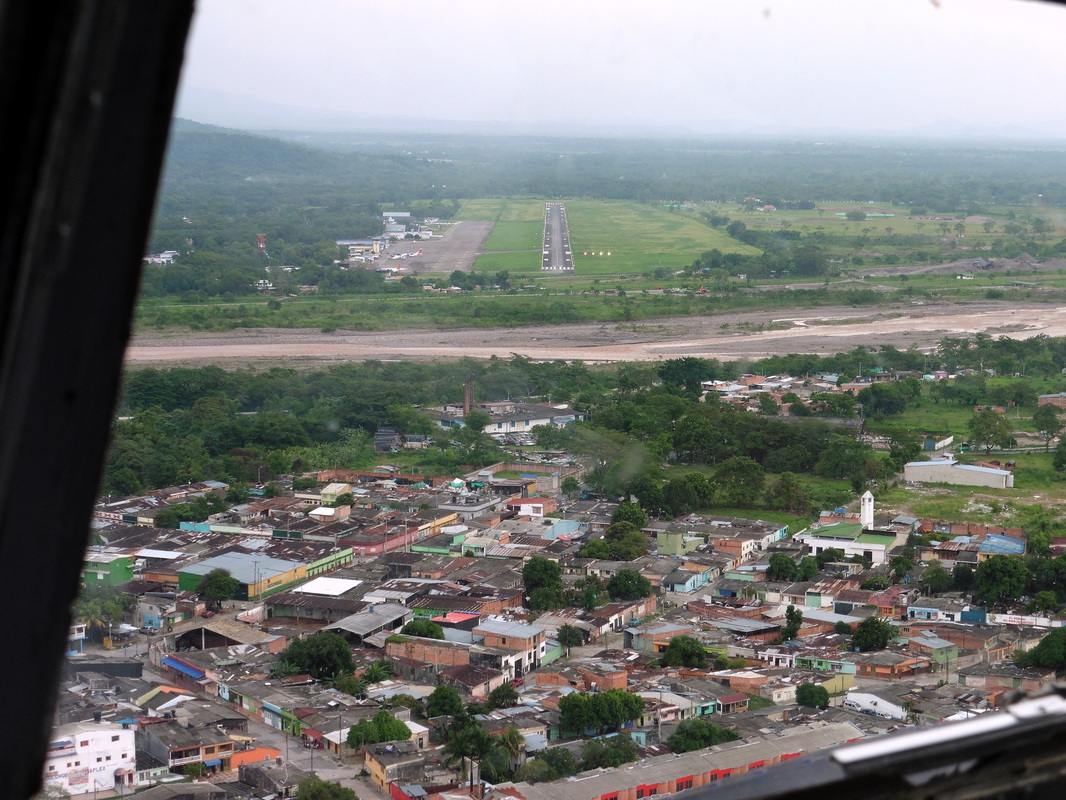Air Colombia
|
Douglas DC-3 HK-3359
HK-3359 is a C-47B-45-DK and build for the USAAF in 1945. After the war she flew in Canada with WaglislaAir as CF-TFV. In 1988 she was imported into Colombia. Transamazonica is the forerunner of Air Colombia. Transamazonica was forced to cease operation and its owner re-started as Air Colombia. Douglas DC-3 HK-3293 Air Colombia C-47A-1-DL HK-3293 during C-check at the company base at Villavicencio, April 2015. This ship had serviced the RAF in the after the war BOAC in the UK. She was sold to Northwest Orient as N9994F and in 1951 she went to the RCAF. In 1970 she was acquired by Basler and in 1982 she left for Colombia. Douglas DC-3 HK-1175 This aircraft left the factory in 1944 for delivery to the USAAF. Originally this DC-3 has been manufactured in 1944 as a C-47A-DL. This military DC-3 variant had two 1200 hp Pratt & Whitney R-1830-92’s engines with a MTOW of 13.320 kg. Basically it was a DC-3A-456 with a 24 volt electrical system and hot-air heating. After the war she was first registered civilian as NC65743 of Miami Airline Inc. Fate hit a blow on April 1953, when it crashed near Selleek, WA. Fortunately it was not fatal and she was rebuild. For a short period she flew in Canada for Montreal Air Service as CF-DME. Via Miami Airline she was exported to Colombia in 1964 and her next operator was Lineas Aereas La Urraca from Villavicencio. The aircraft changing hands once more as she was acquired by Transamazonica Ltda. In 1972 she was seen derelict at Bogota Airport. Finally this frame has been rebuild and is presently part of the Air Colombia fleet. On April 14, 1953 this DC-3 has crashed. The following is information about this incident: The flight departed Washington National Airport, at 00:07 for a flight to Seattle. The flight stopped at Cleveland for fuel and oil and arrived at Chicago at 07:35. Shortly after takeoff at Chicago, the flight returned owing to rough operation of the left engine. The left magneto of this engine was replaced by a spare carried on the aircraft and the flight again departed at 12:15 for Minneapolis, made a fuel stop there, and arrived at Fargo at 16:40. One of the engines was spitting and coughing, but it would take a mechanic 15 minutes to get to the plane, and the crew decided to continue. The left engine started with some difficulty and the flight departed Fargo at 17:48 and made fuel stops at Billings and Felts Field, Spokane. The flight departed Spokane at 00:35 the next day on an IFR flight plan. At 02:07 the pilot of the DC-3 reported an engine failure to Seattle Center. Seven minutes later, Seattle Approach Control heard the pilot report that he was icing up and losing altitude. The flight was cleared for an approach to Boeing Field. The last transmission from the aircraft was received at 02:22, reporting that the flight was at 4,800 feet. The airplane struck 150-200 foot trees at the 3,500-foot level of Cedar Mountain while descending with wings level. The right wing tip was the first portion of structure to contact the trees, and both wing panels were progressively torn away to the center section in a series of decelerations. The fuselage broke into three sections, and the nose section was demolished. Douglas DC-3 HK-3292 This airframe left the factory at Oklahoma in 1944. Originally this DC-3 has been manufactured in 1942 at the Long Beach plant as a C-47A-DL. This military DC-3 variant had two 1200 hp Pratt & Whitney R-1830-92’s engines with a MTOW of 13.320 kg. Basically it was a DC-3A-456 with a 24 volt electrical system and hot-air heating. During her military days she was converted to a SC-47A for search and rescue mission. After the war it was bought by Aero American Corp. During the 70’s her fuselage was stored at Ryan Field, AZ. In 1976 she was rebuild and exported to Canada as C-GABG. In 1980 she returned back to the US. During the 80’s she was exported to Colombia. |
|
|
That day a bought a ticket with Air Colombia for a flight to Mitu and back. After departure Air Colombia Operations Control re-routed the flight for commercial reasons several times that day. Finally our routing was from Villavicencio to Caruru, to Mitu, to San Jose del Guaiare, to Miraflores, back to San Jose del Guaiare and finally at sun-set back at Villavicencio. Only one passanger was very pleased with this decision. What a terrific day!
|

Quite suddenly, the endless green of Amazonian forest opened up, a river appeared portside and HK-1175 softly banked along the water. In the distance, a narrow strip became visible just past the treeline — a dirt runway, all huts and holes. But that’s all there is to this Amazonian jungle outpost of 800 souls
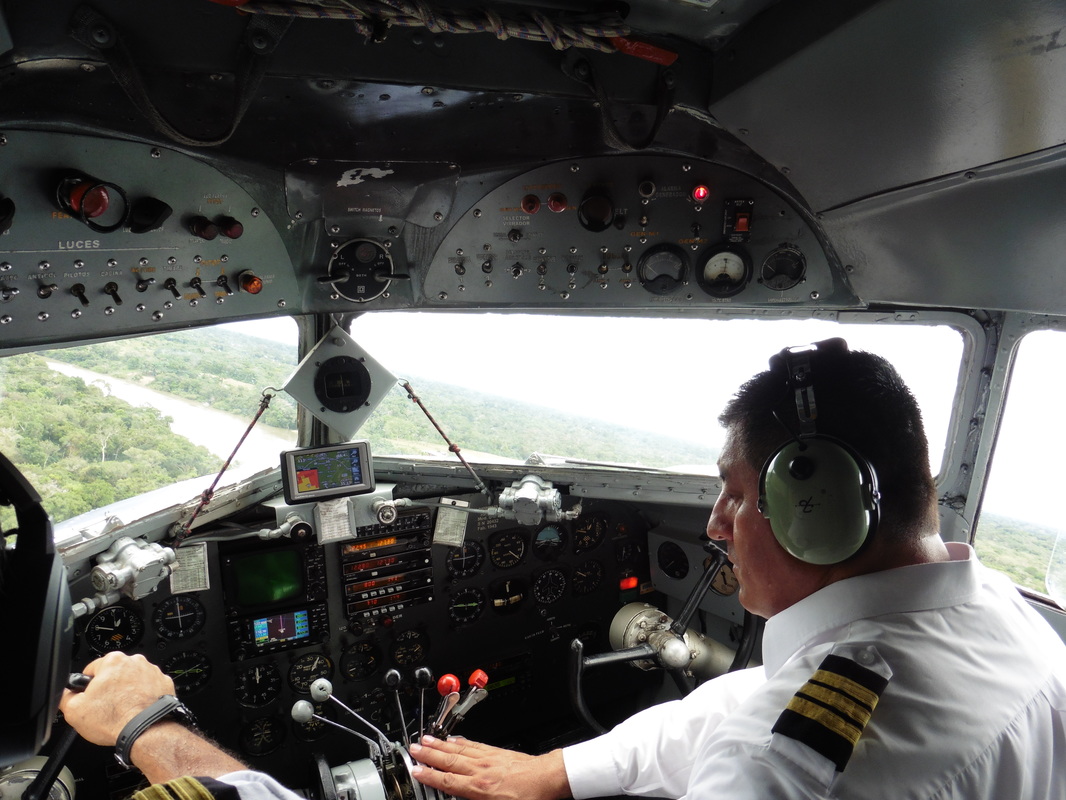
Capt. Joaquin Hernan Sanclemente and his co-pilot Ovidio Alarcon Gonzalez run through the after-takeoff checklist in the cockpit of their DC-3. This particular one was built in 1944 — and it shows. The compass is held in place with bungee cords; there's no autopilot; and if we go down, the survival kit includes a flare gun and a machete

I didn't dare to put the camara and fingers more closer to the props, meanwhile Saclamenta and Gonzalez keep track of where they are by noting the curve of a river or the Indian villages they have flown over countless times. Such landmarks are easy to spot from a plane that travels at less than 130 mph and rarely higher than 8,000 feet.

Mitu approach. Mitú was erected as a modest hamlet in October 1936 by Miguel Cuervo Araoz. The town served as a meeting point between different indigenous communities, in addition of being a center of rubber tree exploitation, fur trade and missionary center. Its main activity was the rubber trade for food, clothing and fuel. After being for a time a township, in 1963 Mitú became the capital of the Vaupés Commissary (Comisaria). In 1974, it was made municipality and in 1991 it became the capital of the new created department
|
Mitú is the capital city of the department of Vaupés in Colombia.[2][3] It is a small town located in South eastern Colombia in the Amazon Basin. Founded in 1936, Mitú lies next to the Vaupés River at 180 meters above sea level. It is where the core of the services (transport and trade) are provided to the Vaupés Department.
The Vaupés River serves as connecting link between Mitú and nearby hamlets on the riverbanks, but there are no roads connecting the town to rest of the country. Accessible only by airplane, Mitú is the most isolated Capital of Department in Colombia. The founding of Mitú can be traced to the rivalry between Brazilians and Colombians exploiting rubber in the basins and ranges of the upper Guainía and Apaporis rivers. By 1903 there was an intense activity exploiting rubber in the area around the Vaupés river using the local Indians, of the ethnic groups tucano and carijonas, as slaves. In November, 1998 an estimated 1,900 FARC guerrilla members of the Eastern Bloc of the FARC-EP tried to take over the town by force, against 120 National Police membersand one Colombian National Army Battalion. The Colombian Air Force and Army Aviation supported ground forces with air raids. Mitu was left partially destroyed and some 60 policemen and 10 civilians died along with over 800 guerrilla members.[4] In their escape FARC took hostages as human shields including some 40 to 45 members of the Colombian Military. Mitu, April 18, 2015 |
|
|
San José del Guaviare is a town and municipality in Colombia, capital of the department of Guaviare by the Guaviare River. It is home to some of the deisolated Nunak people.
San José del Guaviare, city, southeastern Colombia. It lies along the right bank of the Guaviare River, in a transition area between the Llanos (grassland plains) to the north and tropical, semideciduous rainforests to the south. Despite its isolation from neighbouring economic centres, San José del Guaviare has surpassed in population and economic importance the town of Mitú, which lies 200 miles (320 km) southeast. The principal economic activities are cattle raising and farming. An unimproved road extends between San José del Guaviare and northern points such as Bogotá. Pop. (2003 prelim.) 20,778. |
|

Antonov An-26B HK-4730 of Aer Caribe has spent a good part of its lifetime working as a sky-truck in Europe. She flew for CityLine Hungary as HA-TCX, JetLine as ER-AZF, Farnair Europe as ER-AZF and Air Highness as EK-26510. In August 2014 she sustained substantial damage due to a nose gear incident at San Jose. Fortunately, the damage could be repaired
|
Miraflores is a town and municipality in the Guaviare Department, Colombia. The municipality was created on February 8, 1990. The settlement was founded by a group of colonizers during the 20th Century.
On August 1998 a Colombian National Police Base was overran by the FARC guerrillas and later rebuilt and reoccupied on February 2004. The legal economy in the region is mostly based on logging and agriculture and to a minor scale artisan fishing. Due to the presence of the Revolutionary Armed Forces of Colombia (FARC) guerrilla and other groups involved in the illegal drug trade business, the economy in Miraflores was ruled by coca for a long time. The coca paste was sometimes used as currency, substituting the local Colombian peso or the US dollar. The situation had improved the last years which make flying into Miraflores a bit less dangerous. |
|
